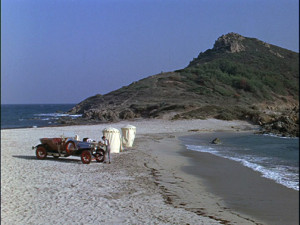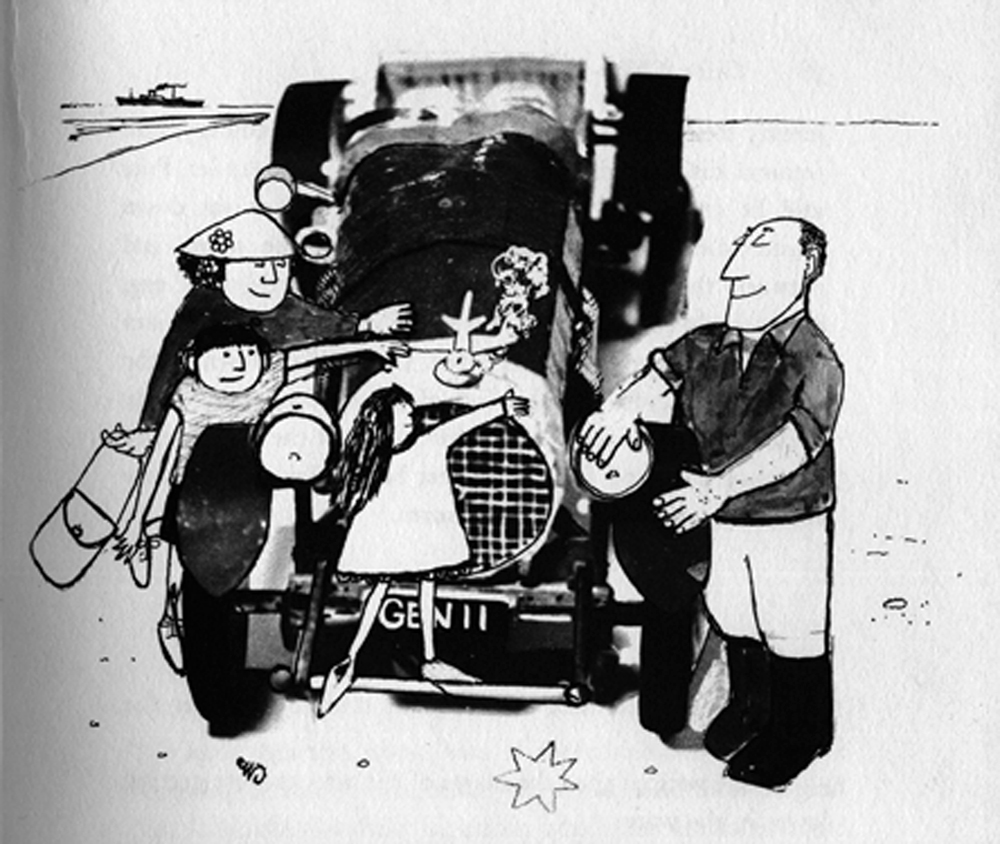On a Sunday in August, Commander Caractacus Pott announces Mimsie, the mother, Jemima and Jeremy, eight-year-old twins: “Today is going to be a roaster,” he said, “a scorcher. There’s only one thing to do, and that’s for us to take a delicious picnic and climb into Chitty-Chitty-Bang-Bang and dash down the Dover Road to the sea.”
Fleming’s Chitty-Chitty-Bang-Bang: The Magical Car begins a series of marvelous adventures, the first of which is flying over stalled road traffic to a sandbar in the English Channel. (We have all dreamed of doing this.)

The beach blanket is barely visible behind the car and the pavilions. The beach is not Dover, England, but Cap Caillat, near Saint-Tropez on the French Riviera. Ken Hughes 1968
Everyone is delighted to help. Swiftly, Mimsie Pott fills the picnic basket with “hard-boiled eggs, cold sausages, bread-and-butter sandwiches, jam puffs, and bottles of the best fizzy lemonade and orange soda.“ Jemima and Jeremy quickly pack their swim gear and toys.
Amidst the hubbub, the Commander lavishes great attention to Chitty-Chitty-Bang-Bang: filling the gas tank, checking the oil and the tire pressure, cleaning the windshield, dusting the body, polishing the chrome. It’s exhausting but done in great good spirits for a glorious picnic ahead.
John Burningham’s illustrations convey the mood of fun and adventure, Fleming’s trademarks for adult fiction. Ken Hughes’ film departs radically from Fleming’s novel. There’s food, but it’s hidden.
Featured Image: John Burningham. “Of course, everyone was delighted with the idea, and while Commander and Jeremy and Jemima went to get Chitty-Chitty-Bang Bang-Bang ready,”
See Ian Fleming. Chitty-Chitty-Bang-Bang: The Magical Car. Illustrated by John Burningham. New York: Random House, Inc., 1964; Ken Hughes. Chitty Chitty Bang Bang (1968). The screenplay by Roald Dahl and Ken Hughes is based on Ian Fleming’s novel. Music and lyrics by Richard M. and Robert B. Sherman.

